Consider a transparent hemispher (n=2) in front of which a small object is placed in air (n=1) as shown in figure. 
Q. Consider a ray starting from O which strikes the spherical surface at grazing incident (i=90∘). Takin x=R, what will be the angle (from normal) at which the ray may emerge from the plane surface.
90∘
0∘
30∘
60∘
The correct Answer is:a
i. μ2v−μ1u=μ2−μ1R
Taking refraction first at curved surface,
2v1+1x=1R⇒v1=2Rxx−R
For plane surface,
v′=v1R⇒v′=xR+R2x−R
⇒1v−2(x−R)R(x+R)=0
1v−2(x−R)R(x+R)
For virtual image,
1v<0⇒2(x−R)R(x+R)<0
x<R
ii. For x=2R
V1=4R2R=4R⇒u=−2R
m1=μ1μ2,vu=12,4R(−2R)=−1
m2=1⇒m1m2=−1
Image is real, inverted, and of same size.
(iii) Hence, correct answer is 90∘
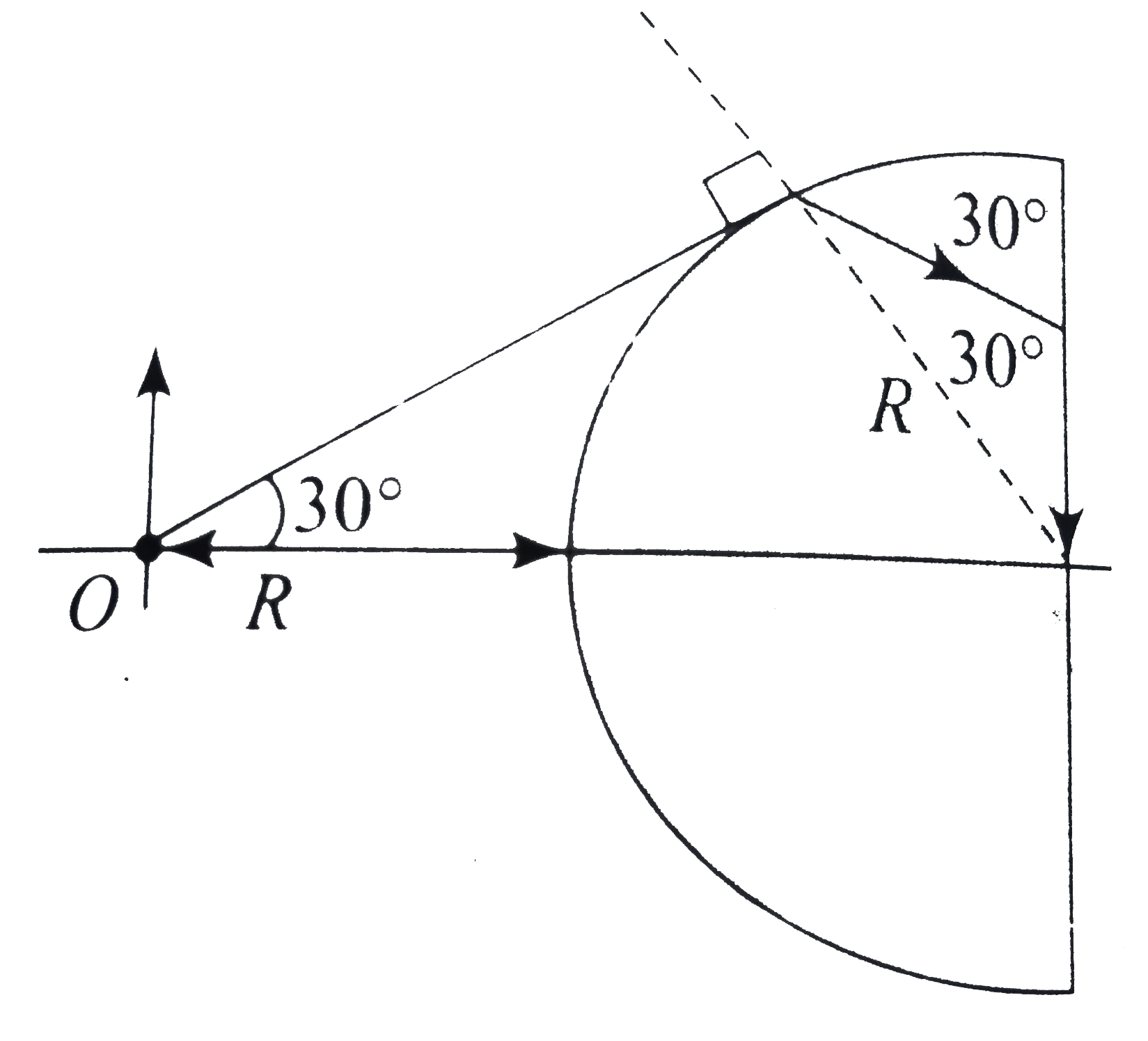
Topper's Solved these Questions
- BOOK - CENGAGE PHYSICS ENGLISHCHAPTER - GEOMETRICAL OPTICSEXERCISE - Integer15videos
GEOMETRICAL OPTICS
- BOOK - CENGAGE PHYSICS ENGLISHCHAPTER - GEOMETRICAL OPTICSEXERCISE - Archives7videos
GEOMETRICAL OPTICS
- BOOK - CENGAGE PHYSICS ENGLISHCHAPTER - GEOMETRICAL OPTICSEXERCISE - Assertion-Reasoninig2videos
GEOMETRICAL OPTICS
- BOOK - CENGAGE PHYSICS ENGLISHCHAPTER - ELECTRON,PHONTS,PHOTOELECTRIC EFFECT & X-RAYSEXERCISE - dpp 3.315videos
ELECTRON,PHONTS,PHOTOELECTRIC EFFECT & X-RAYS
- BOOK - CENGAGE PHYSICS ENGLISHCHAPTER - HEATING EFFECT OF CURRENTEXERCISE - Thermal Power in Resistance Connected in Circuit27videos
HEATING EFFECT OF CURRENT
Similar Questions
Consider a transparent hemispher (n=2) in front of which a small object is placed in air (n=1) as shown in figure.
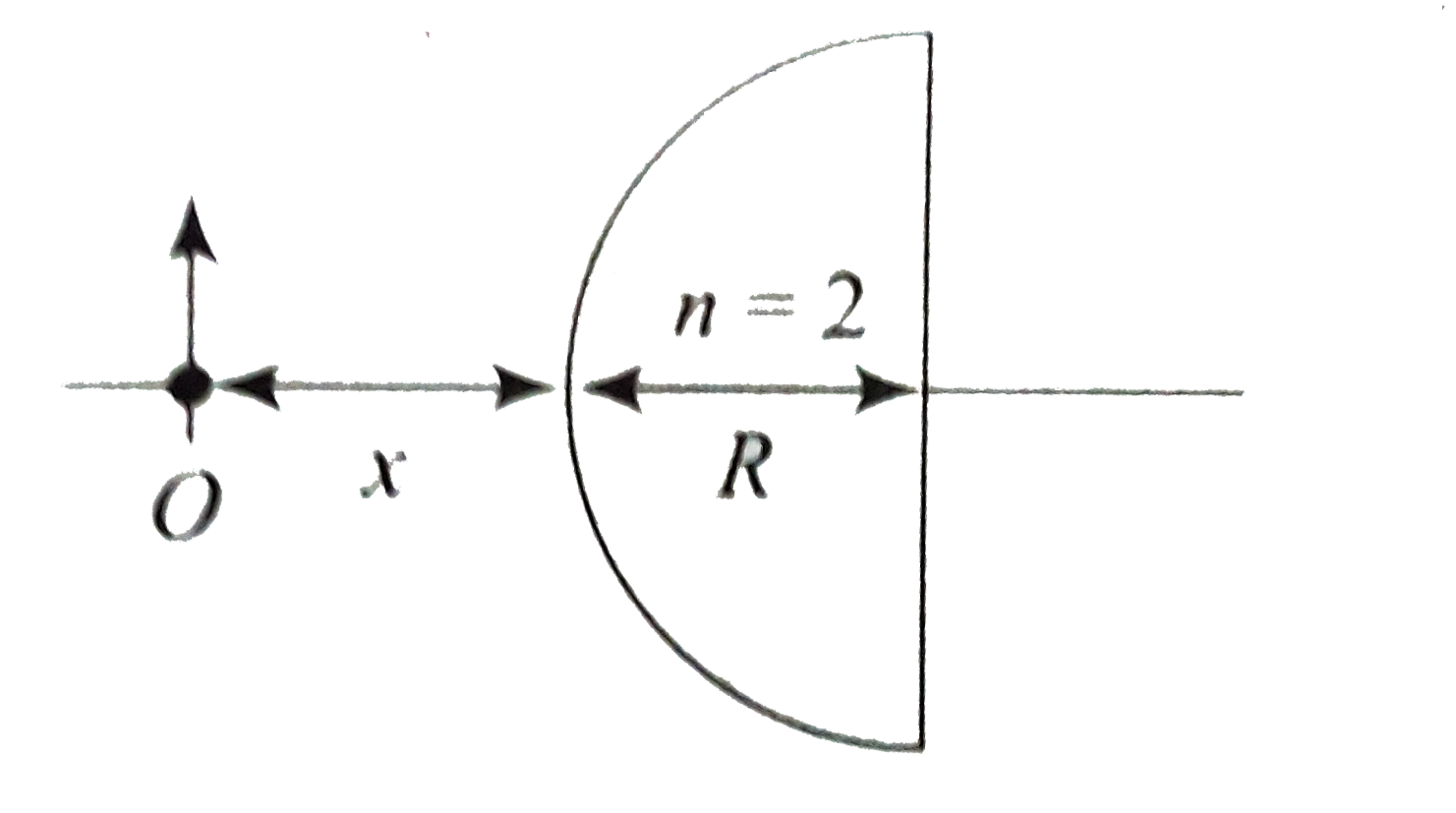
Q. What is the nature of final image of the object when x=2R?View Solution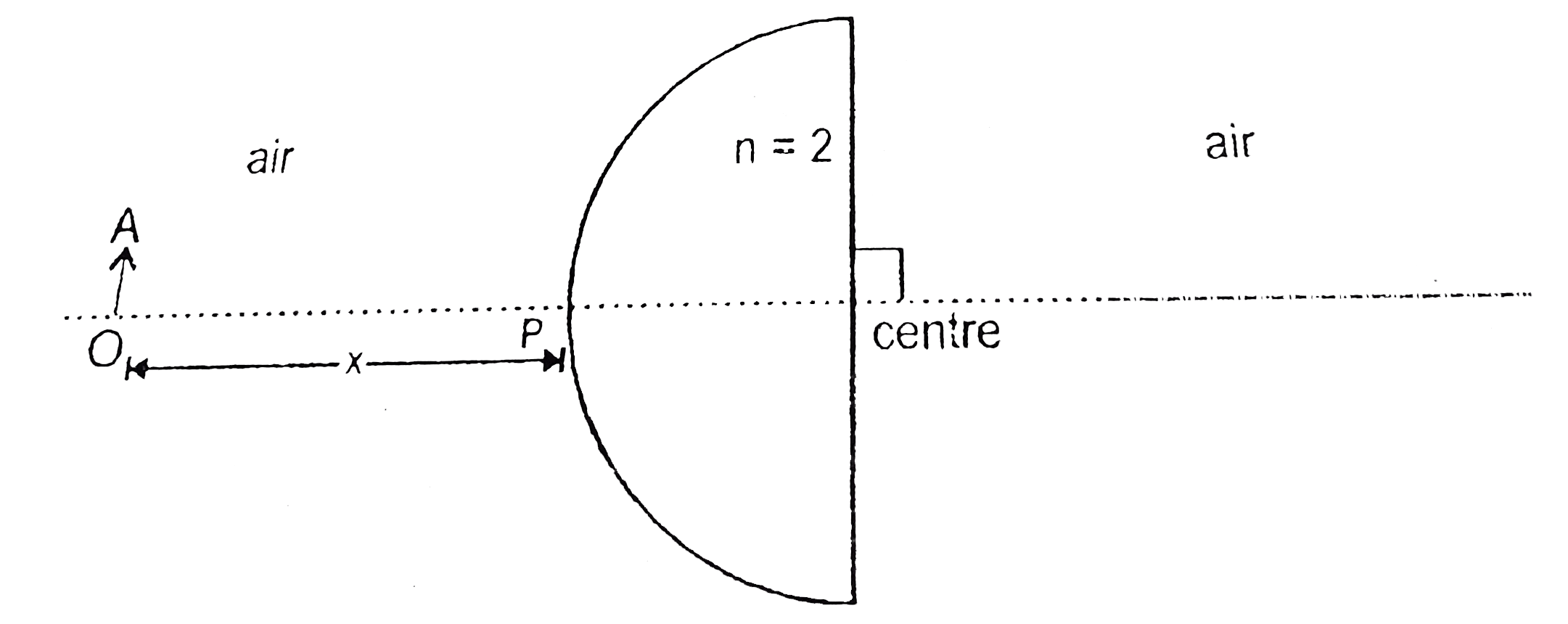
Consider a transparent homogenous hemisphere of refractive index n=2 in front of which a small object is placed in air as shown in figure.View SolutionConsider a transparent hemispher (n=2) in front of which a small object is placed in air (n=1) as shown in figure.
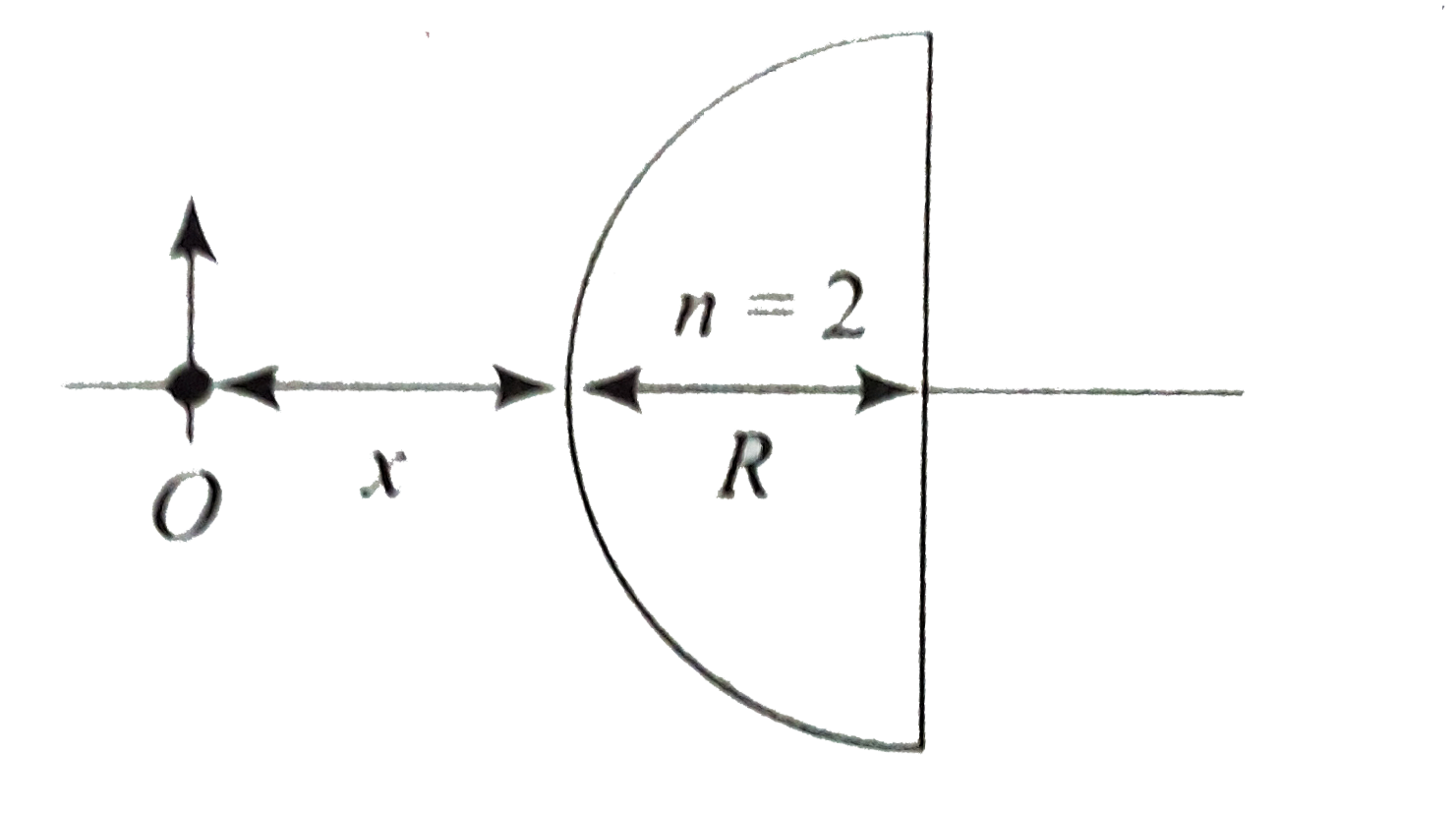
Q. For which value of x, of the following , will the final image of the object O be virtual?View SolutionA prism (n=2) of apex angle 90∘ is palced in air (n=1). What should be the angle of incidence so that light ray strikes the second surface at an angle of incidence 60∘.
View SolutionThe figure ,shows a transparent sphere of radiusRand refractive indexμ.An object Ois placed at a distance x from the pole of the first surface so that a real image is formed at the pole of the exactly opposite surface.
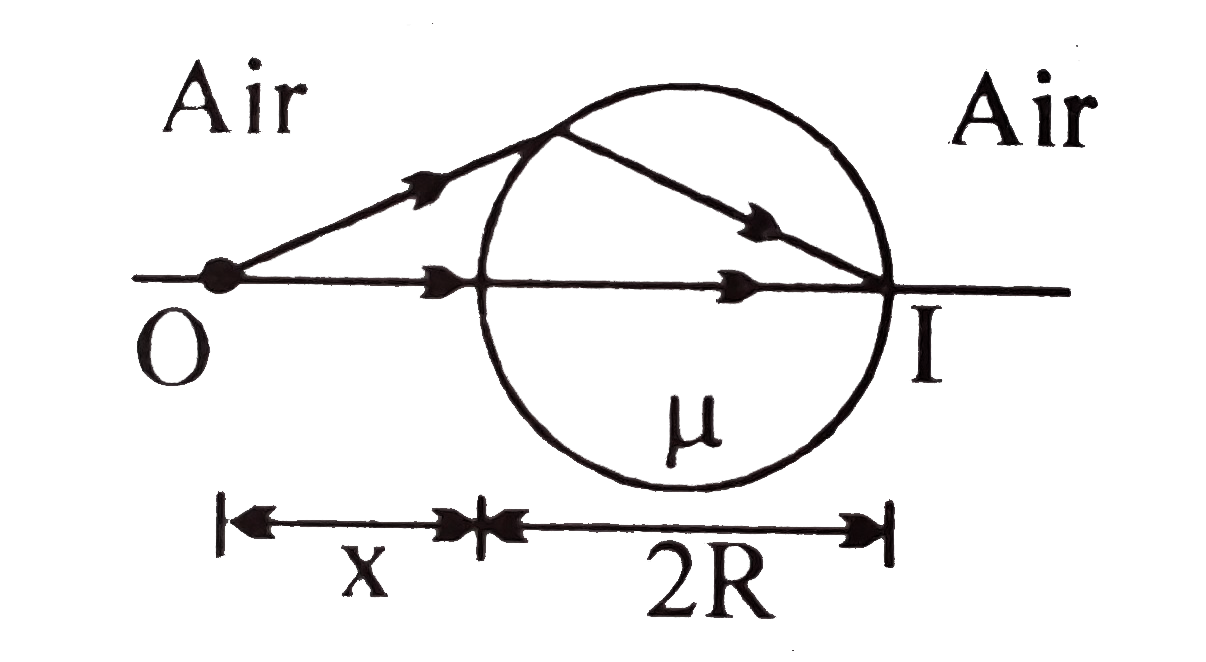 if an object is Placed at a distanceR from the pole of first surface ,then the real image is formed at a distance Rfrom thepole of the second surface.The refractive indexμ of the spher is given byView Solution
if an object is Placed at a distanceR from the pole of first surface ,then the real image is formed at a distance Rfrom thepole of the second surface.The refractive indexμ of the spher is given byView SolutionLight ray is incident on a prism of angle A=60∘ are refractive index μ=√2. The angle of incidence which the emergent rays grazes the surface is given
View SolutionA light ray is incident normally on the face AB of a right-angled prism ABC(μ==1.50) as shown in figure. What is the largest angle ϕ for which the light ray is totally reflected at the surface AC ?
 View Solution
View SolutionA right angles prism (45∘,90∘,45∘) of refractive index n has a plate of refractive index (n1<n) cemented to its diagonal face. The assembley is in air. A ray is incident on AB.
a. Calculate the angle of incidence at AB for which the ray strikes the diagonal face at the critical angle.
b. Assuming n=1.351, calculate the angle of incidence at AB for which the refracted rey passes through the diagonal face undeviated.
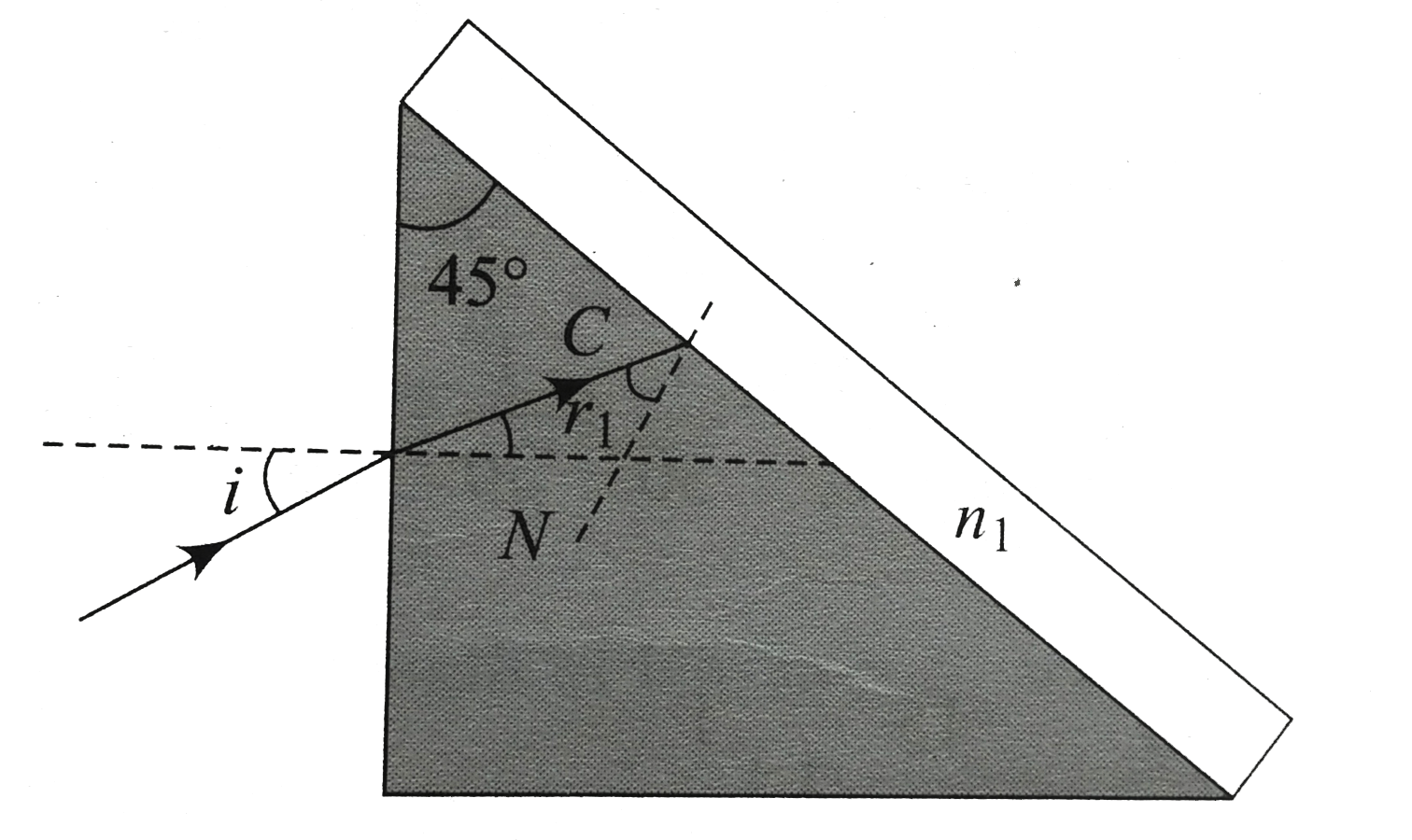 View Solution
View SolutionConsider a ray of light incident from air onto a slab of glass (refractive index n) of width d, at an angle θ . The phase difference between the ray reflected by the top surface of the glass and the bottom surface is
View SolutionConsider a ray of light incident from air onto a slab of glass (refractive index n) of width d, at angle θ. The phase difference between the ray reflected by the top surface of the glass and the bottom surface is
View Solution

